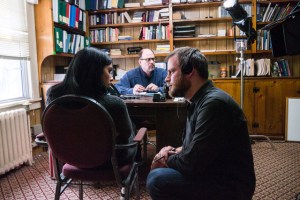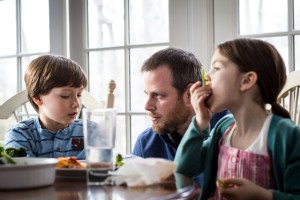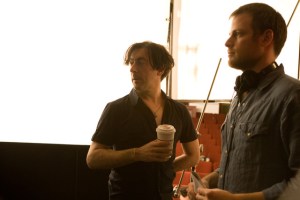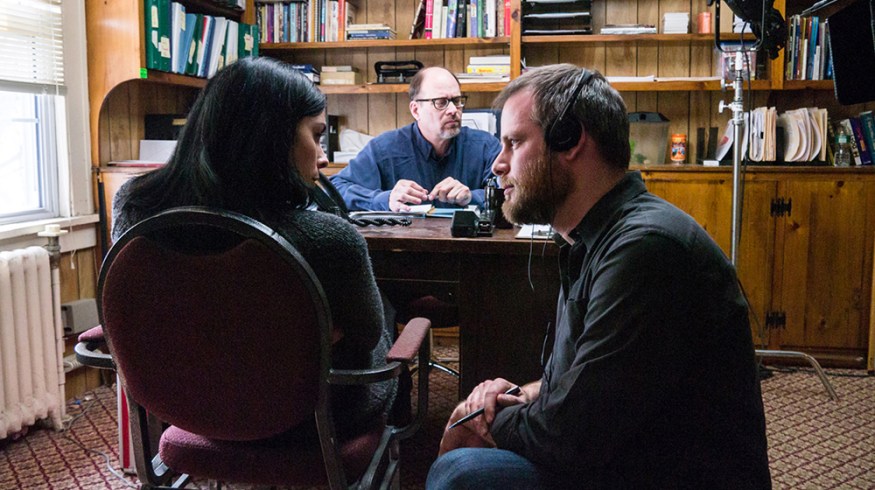
Interview: Adam Salky on Directing Projects with Powerful Emotional Themes
Director Adam Salky talks about his approach to filmmaking and working on his recent project “I Smile Back” with Sarah Silverman.
It can be easy for aspiring filmmakers to focus on the technical tools and practices of cinematography. Learning about cameras, compression methods, audio mixing, post-production programs, and every gadget in the filmmaking world offer endless hours of research, study, and entertainment for anyone interested in making a motion picture. However, the most fundamental element of storytelling is an art form often overlooked by new cinematographers: the art of directing.
In my weekly practice of choosing a movie to watch on movie night, I was excited to finally find I Smile Back, directed by Adam Salky and starring Sarah Silverman. The film tells the story of Laney Brooks (played by Sarah Silverman) and her struggle with bipolar disorder and a string of crippling addictions she hides in her role as a stay-at-home-mom in an affluent suburb in New York.
Despite the painful, private realities Salky painted so vividly in his approach to directing the film, I couldn’t look away from the screen for a second. He captured the real-life challenges of mental illness in a family dynamic, and he shed new light and a deeper understanding of how it affects real people. I found myself moved by the way he told the story.
In addition to Adam Salky’s work as director in I Smile Back, I was particularly moved by the short film he directed as a film student called “Dare” and its eventual evolution into his first major feature-length film with an incredible cast of talented and experienced actors. Both Dare and I Smile Back were beautifully executed films that concentrate on delicate and emotional stories — something I aspire to one day convey in my own work. Our conversation is below.
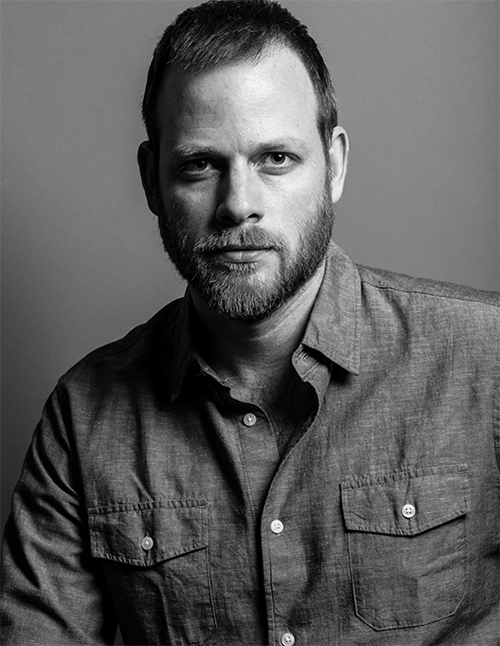
Image via Jeong Park.
PremiumBeat: Both I Smile Back and Dare are dramatic stories with deep internal struggles for the main characters. What drew you to direct these types of films, and what did you hope to convey to your audience?
Adam Salky: I find that I tend to gravitate towards storytelling that expresses either something I have experienced myself or seen in someone very close to me. So in that way, both Dare and I Smile Back deal with subject matter that is very personal.
The Dare screenplay, written by David Brind, reminded me of aspects of my own adolescent experience. It’s such a complex and perplexing time. David did a beautiful job illustrating adolescent desire, its power, and how it can get in the way of important friendships at that moment when you are trying to grow at all costs. The journey of Laney Brooks in I Smile Back is very similar to the life one of my best friends. I hope both stories make people who are experiencing similar events in their own lives feel less alone, and if they don’t have that particular experience they can serve as a window into something new.
PB: Talk a bit about your career path after film school to directing the full-length feature film version of Dare.
AS: Actually, the Dare short film was my end-of-the-first-year project at Columbia University’s Graduate Film Program in New York. David and I had a great collaboration, and the short ended with a feeling of “What’s next?” so we developed it into a feature. I had three more years of film school until we were able to get Dare together. We shot it in 2008. Little known fact: the Dare feature retroactively became my thesis film. I didn’t have time to make a thesis short, so the school allowed me to use the feature to graduate!

Mandatory Credit: Photo by Gigantic/Kobal/REX/Shutterstock (5862977a) Zach Gilford, Emmy Rossum -Dare – 2009 – Director: Adam Salky – Gigantic Pictures – USA – Scene still.
PB: How much of your life and effort did you put into promoting the Dare short film, and describe the events that lead to it being made into a feature with such an incredible cast for your first major directorial role.
AS: The Dare short played about 50 festivals all over the world in 2005 and we sold it in the U.S. to Strand Releasing and to a bunch of international territories. I remember that we spent a lot of time applying to the first few film festivals and attending them, and after that the film was invited to most of the other festivals it played. And we’ve just made a fan-demanded sequel to the Dare short film, so the work continues! (Shameless plug: Sign up for news on the sequel here.)
I’m so happy you asked about the cast of the feature because I consider myself incredibly lucky to have worked with that group. Emmy Rossum, Rooney Mara, Alan Cumming, Sandra Bernhard, Zach Gilford, Ashley Springer, and Ana Gasteyer. We had a wonderful casting director, Kerry Barden, who found us Rooney Mara. Emmy and Zach had the same manger who had read the script and was very intelligent about getting it in front of his clients. All of the leads either came in to Kerry’s office and read for us, or sent in tapes.

Mandatory Credit: Photo by Dave Allocca/Starpix/REX/Shutterstock (5632945w) – Alan Cumming, David Brind, Adam Salky and Emmy Rossum – The 12th Annual Savannah Film Festival hosted by SCAD, Savannah, Georgia, America – 02 Nov 2009 – The 12th Annual Savannah Film Festival where they honored Woody Harrelson and Ben Foster with the Outstanding Achievement in Cinema Award on opening night and Emmy Rossum with the Young Hollywood Award prior to the screening of her new film DARE. The Savannah Film Festival is hosted by SCAD the Savannah school of Art and Design.
PB: Describe how you’re able to stay true to your artistic intentions with stories like Dare and I Smile Back when working with major studios and distributors in the mainstream market. Did you feel you had to make compromises in order to deliver what they wanted for a wider demographic?
AS: Since both Dare and I Smile Back are independent films, they each offered a lot of creative freedom. With indies, you make the film on your own outside of the marketplace, then you try to sell it at a place like Sundance Film festival. That’s where the rubber hits the road. You’ll find out if your artistic cinematic effort has any appeal to commercial buyers. I feel very lucky that both Dare and I Smile Back received wonderful critical notices and had theatrical releases. Both films can be rented or bought on disc and streamed online or through smart apps on TV, Roku, Apple TV, etc.
PB: What is your role in the casting process? Talk about how you met Sarah Silverman and why you felt she was right for the lead role in a dramatic role after being so well known for her brilliant work as a comedic actress, writer, and producer.

Mandatory Credit: Photo by Broadimage/REX/Shutterstock (10048859bb) – Sarah Silverman – Sean Penn J/P Haitian Relief Organization, Arrivals, The Wiltern, Los Angeles, USA – 05 Jan 2019
AS: I am very hands-on with casting. I go to sessions, work with the actors who come in, and I try to get a feel if A) they’re right for the part and B) I can work with them. Sarah is an interesting case because she was actually attached to the film for four years before I got involved. Amy Koppelman, the writer of the novel and the co-writer of the screenplay, heard Sarah on Howard Stern’s show talking about her autobiography and had the inspiration that she would understand the role. They got the book to Sarah, who read it and, as the story goes, told Amy that if she wrote a script and “it doesn’t suck” that she would do it. Four years and a few directors later, they met me. Seven months after that we started shooting.
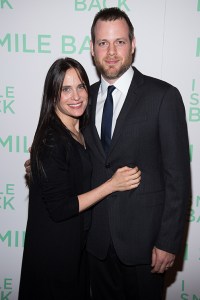
Mandatory Credit: Photo by Charles Sykes/Invision/AP/REX/Shutterstock (9081687q) – Amy Koppelman and Adam Salky attend a special screening of “I Smile Back” at The Museum of Modern Art, in New York, NY Special Screening of “I Smile Back”, New York, USA.
PB: How many days did it take to film I Smile Back?
AS: Twenty very full, very challenging days!
PB: Describe the rehearsal process with the actors in I Smile Back. How many days did you rehearse?
AS: Most independent films have zero rehearsal because there usually isn’t money to pay the actors to commit the time. Or, the actors are so busy working that they literally only show up the day before the shoot, and/or the film doesn’t have the time or money to make room for it in a very quick prep. TV has even less time because you don’t even meet the actors until you show up on set on the first day!
On I Smile Back I was lucky to be in touch with Sarah from the moment I became involved. We met in person and spoke many times over the phone about the character, different scenes, story moments. Then as we got closer to production, we did have two extremely helpful, multi-hour rehearsal sessions where we read through the script with the whole cast and worked on a particularly tough scene the night before we shot it. I love rehearsal. I say use as much as you can get.
PB: Several scenes in I Smile Back are deeply emotional and painful while portraying the many perspectives that are deeply affected by a person with mental illness. Can you describe what the set is like in some of these particularly painful scenes? Do you set a different tone for the crew or limit who is in the room during filming?
AS: I Smile Back did have a certain seriousness to it while filming. Some of that was because of the material and some of that was all of the people involved who felt so strongly about telling this story. It was also a very ambitious, twenty-day shoot. We were “making” every day by the skin of our teeth, which required intense focus. So intense that there was barely even time to breathe. That being said we did laugh, and Sarah had a couple of really funny running jokes that kept us smiling. Also the kids played by Skylar Gaertner and Shayne Coleman were so fun and funny and always brightened the set when they were around.
As for intimate scenes, especially those with nudity, I always insist on a closed set with the crew to a minimum so it could be as private as possible. I think setting the tone for delicate scenes begins on day one when you first meet your cast and start building your team. If you’re prepared, calm, and you authentically know the story you’re telling then you build goodwill and trust with your collaborators. By the time you get to the intimate scene, you are all on the same page and ready. I think it’s really hard to set the tone on that day. If you have to do that, you may have done something wrong a long time ago.
PB: Talk about the kind of direction you would give in scenes with Sarah’s powerful performance of hitting rock bottom while in her daughter’s room with the teddy bear. As a director, how do you handle giving feedback to an actor when the scene requires deeply emotional and painful actions? What do you do to facilitate a mood that allows an actor to feel comfortable enough to explore themselves for such a deep performance?
AS: I’m so glad you singled out that moment because it’s one of my favorites in the film. Filming it was also one of the high points of the production because of the way the crew rallied to rise above our budget and schedule to achieve one of the most visually complex moments — one where Laney walks through the halls of her home, winding through her kids’ rooms and landing in front of her childhood teddybear. We were a very small film on a tight budget and schedule. After that first take, the whole crew clapped. It was one of those moments during the filming where everyone felt together and connected and proud, like we could do anything and rise above any challenge.
As I mentioned above, the mood of the set is already there if you’ve done your job leading up to that moment. Sarah, as always, was fearless with her choices, and always open to new ideas. I could not be more proud of our collaboration.
PB: What is your approach to directing child actors in a dramatic scene? I would imagine that even experienced young actors still need a good bit of shaping and guidance in order to get an authentic performance.
AS: I treat them like young adults. I do not talk down to them. When in doubt you can always try rolling the camera without saying “action” to capture some natural moments.
PB: Should young people inspired by cinema go to film school?
AS:I love film school. I attended film school, created my first feature in film school, I’ve taught at 4 different film schools including Columbia and USC, and I’m currently the head of the directing discipline at The AFI Conservatory so . . . yes!
PB: What should the balance of commercial and artistic work be for young filmmakers?
AS:It’s not a one-size-fits-all answer. Everyone is on their own journey. I think young filmmakers should set out to make the films they want to make. If they end up being commercial, then great. If you happen to want to make comedies or horror films, we know there is more commercial potential in those kinds of films than dark dramas. We can have a sense up front if there will be an audience for the work. We’re not always right. But, if nothing else, knowing the genre of what you’re setting out to make can help set commercial expectations.
But, artists have to sustain themselves so they can make their art. We all have to eat and pay rent, etc. A life in filmmaking is a marathon. Every artist must find the thing(s) that can sustain them while they work to set up their careers. For me, that has been teaching. I have a friend who composes music for commercials. Another who edits professionally. Find that thing and don’t give up on the work!
PB: Talk about your technical background of filmmaking and whether or not that is an essential skill for a director.
AS: I don’t think it’s essential for a director to have a technical background. A command of story is paramount, and the ability to communicate that story to the team. However, I started in editing and camera and crewing, and all of those things have served me well.
PB: How would you describe the role of a director of a film to an emerging filmmaker? Describe your relationship and function with the producers, the DP, the writer, the actors, and even the gaffer.
AS: The director designs the experience of the film in the same way an architect designs a building. You ask: how do I want people to feel as they leave the theater and then you guide every creative choice afterwards to achieve that goal. The cast, the shots, the edit, the music, the costumes etc. Everything chosen to create a unified film that says the thing you set out to say.
Adam Salky’s work in film is an important reminder to any filmmaker that substance, vibe, and subtleties are more powerful storytelling tools than any piece of equipment. A powerful function of cinema is to tell a story in a way that deeply engages an audience in a thoughtful way; both I Smile Back and Dare did exactly that. I will surely keep Adam’s thoughtful perspective in my back pocket during all of my future endeavors in the motion picture medium, and I hope that you will, too.
Cover image via I Smile back (photo by Jeong Park).
Looking for more industry interviews? Check these out.
- Set Photographer Matt Kennedy on Shooting for Marvel and More
- Interview: Composer Dan Marocco of Brooklyn Nine-Nine
- Interview: Outspoken Comedian Tess Rafferty on Getting Political
- Interview: Tracy Andreen on the Romance of Writing for Hallmark
- Interview: Daniel Levin, DP of Rest in Power: The Trayvon Martin Story

